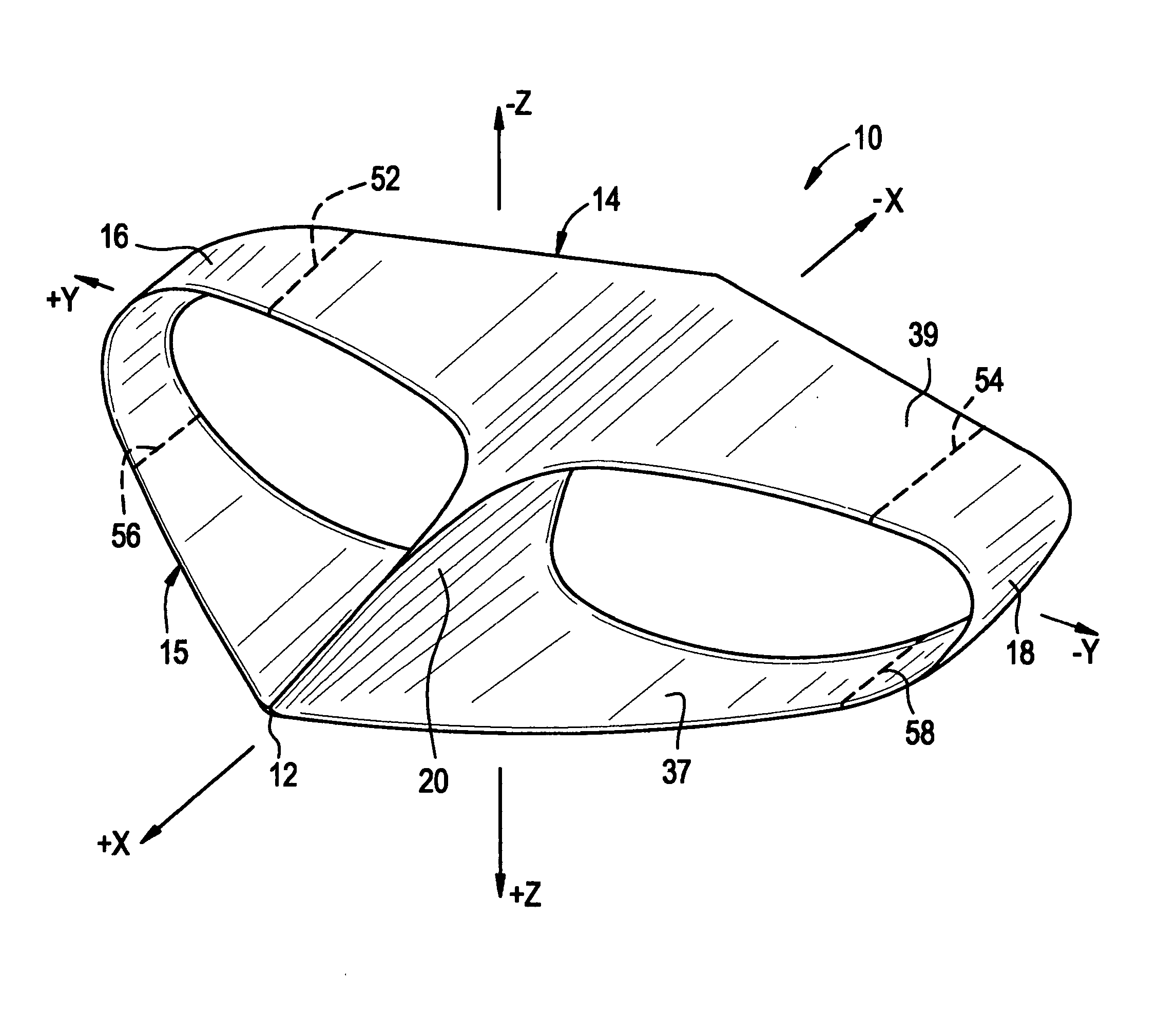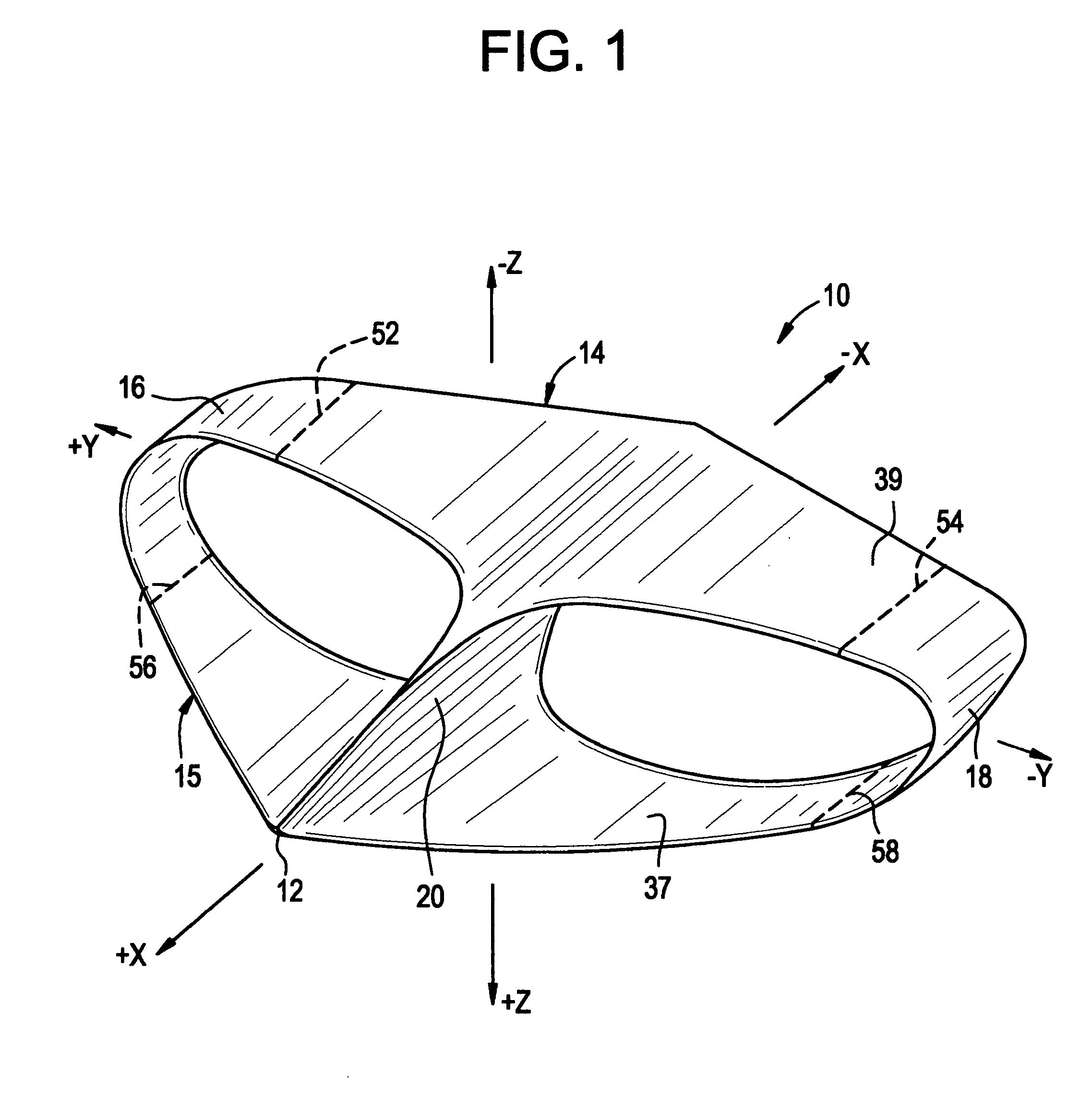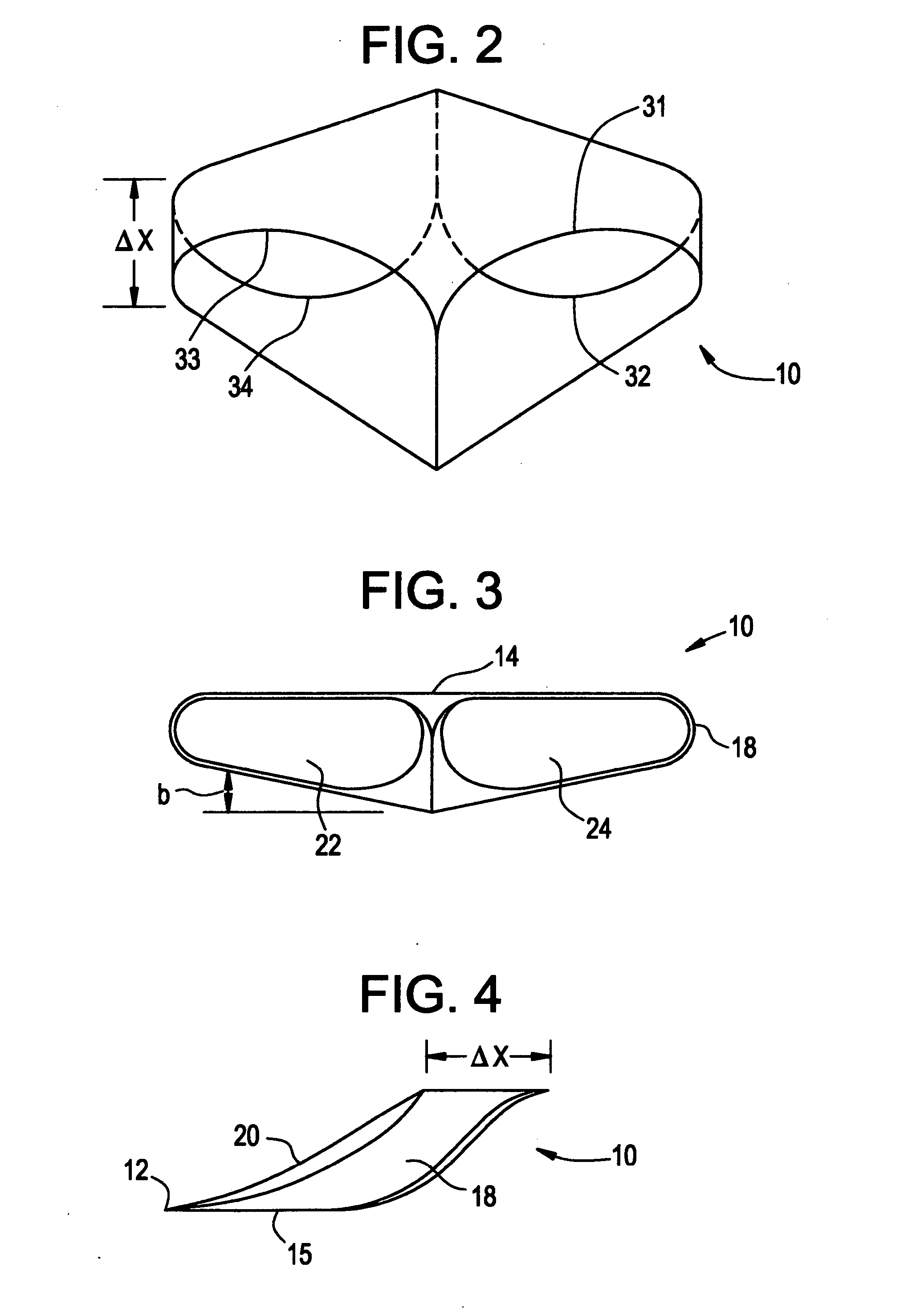Lifting foil
a foil and foil technology, applied in the field of fluid dynamics, can solve the problems of increasing commercial and governmental air transportation expenditures, high air transportation costs, and insufficiently satisfying techniques for dealing with induced drag, so as to achieve no substantial drag penalty, increase lift, and increase lift
- Summary
- Abstract
- Description
- Claims
- Application Information
AI Technical Summary
Benefits of technology
Problems solved by technology
Method used
Image
Examples
Embodiment Construction
[0046] A preferred embodiment of the subject invention may have a form as generally illustrated by lifting foil 10 in FIGS. 1-4. FIG. 1 is a perspective drawing of the lifting foil with a coordinate system attached. The coordinate system has its origin at the center-of-gravity of foil 10. It is right-handed and employs conventional 3-axis, X,Y,Z Cartesian coordinate designations. Directions may also be referred to as “starboard” (+Y), “port” (−Y), “fore” (+X), “aft” (−X), “up” (−Z) and “down” (+Z). The term “spanwise” is used to refer to sideward motion in either the +Y or −Y direction. The lifting foil is laterally symmetrical across the X-Z vertical plane. FIG. 2 is a top view of lifting foil 10 while FIGS. 3 and 4 are front and side views respectively.
[0047] Lifting foil 10 comprises four basic elements, blended end-to-end to form a closed loop surrounding an open interior These elements are an upper course 14, a lower course 15, a starboard flow guide, 16 and a port flow guide ...
PUM
 Login to View More
Login to View More Abstract
Description
Claims
Application Information
 Login to View More
Login to View More - R&D
- Intellectual Property
- Life Sciences
- Materials
- Tech Scout
- Unparalleled Data Quality
- Higher Quality Content
- 60% Fewer Hallucinations
Browse by: Latest US Patents, China's latest patents, Technical Efficacy Thesaurus, Application Domain, Technology Topic, Popular Technical Reports.
© 2025 PatSnap. All rights reserved.Legal|Privacy policy|Modern Slavery Act Transparency Statement|Sitemap|About US| Contact US: help@patsnap.com



